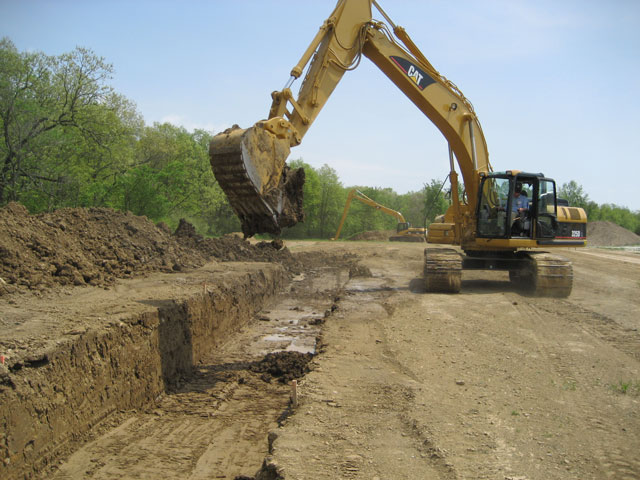Researchers
David White
Heath Gieselman
About the research
CS-563 and CS-683 smooth drum vibratory machines and a CP-563 padfoot machine were used to construct controlled soil test beds to evaluate the repeatability of CMV and MDP roller-integrated measurements, compare integrated CMV and MDP measurements, and evaluate and document CMV and MDP for a given machine as it relates to measurement influence depth.
The repeatability study involved conducting about 15 passes of each machine over relatively uniform and hard ground at two speeds and two amplitudes. A statistically sound approach to evaluating and presenting the raw data to the end user (e.g. compute average values for selected interval, etc.) was developed as part of this study. Results show that there is a machine specific and unique relationship between CMV and RMV and that speed, amplitude, travel direction, and drum-ground behavior mode can be statistically significant parameters in repeatability analysis.
Test beds constructed to evaluate two different subsurface conditions – hard and soft – demonstrated that roller and in-situ compaction measurements are influenced by the stiffness and heterogeneity of the supporting layer conditions. Further, although the compaction layer properties are relatively uniform, the roller measurements tend to capture the variability of the underlying layers, which is important for proper results during field calibration. Post-construction tests of the multi-lift test beds clearly demonstrated that compaction layers stiffness increases due to deep densification of underlying layers during compaction.





